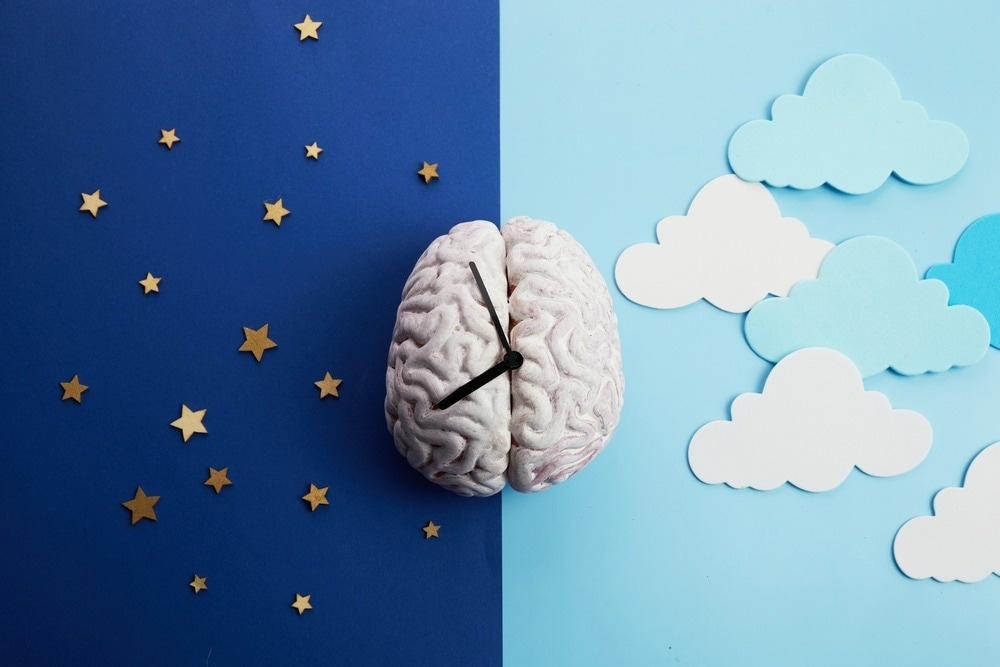In a recent study published in the journal Genome Biology and Evolution, researchers examined the differences in circadian biology between the ancestors of modern humans and the archaic hominins such as Denisovans and Neanderthals and the contribution of archaic introgression in human chronotypes by using genomes to trace chronotype evolution from archaic hominins to modern-day humans.
 Study: Archaic Introgression Shaped Human Circadian Traits. Image Credit: vetre/Shutterstock.com
Study: Archaic Introgression Shaped Human Circadian Traits. Image Credit: vetre/Shutterstock.com
Background
Modern humans are believed to have evolved 300 thousand years ago in Africa, where environmental factors had a prominent role in shaping their biology. However, when the ancestors of the modern Eurasian humans migrated out of Africa around 70 thousand years ago, they were exposed to diverse environments and seasonal variations in photoperiods and temperature.
Studies in animals such as chinook salmon (Oncorhynchus tshawytscha) and fruit flies (Drosophila melanogaster) have found that variations in the levels and patterns of light exposure have an impact on the biology and behavior of organisms, including polymorphisms and variations in the allele frequencies of genes involved in the circadian system. However, while the evolution and adaptation of the circadian system in response to varying environments has been widely studied in plants, fishes, and insects, there is a paucity of such studies among humans.
About the study
In the present study, the researchers examined the role of archaic introgression in variations in human circadian biology using a comparative genomic approach to identify these differences between anatomically modern humans and archaic hominins. Previous studies have found that the latitude of a region is correlated with the chronotype of an individual, which is their propensity to sleep at a particular time of the day, such as morning or evening.
Furthermore, misalignment of the chronotype has been linked to various diseases such as obesity and cancer, while the evening chronotype has been associated with mood disorders such as depression, seasonal affective disorder, and the deterioration of bipolar episodes. Therefore, the researchers hypothesized that the varying environmental factors and geography encountered by modern humans as they migrated out of Africa into higher latitudes could have created potential misalignments of chronotypes.
Additionally, the interbreeding between the ancestors of modern humans and the archaic hominins such as the Denisovans and Neanderthals resulted in the introgression of the archaic variation into the genome of modern-day humans. While a large part of these introgressed genes were subject to negative selection, some of these alleles seem to have adapted and been retained, contributing to characteristics such as resistance to pathogens, hemoglobin levels in Tibetans residing at high altitudes, and skin pigmentation levels.
A study using the United Kingdom (UK) Biobank data also found that introgressed archaic alleles were linked to sleeping patterns reported by the participants and contributed to chronotype heritability. Using the genomes of several archaic hominins, the researchers evaluated the variants for factors such as the influence on splicing, proteins, and the regulation of a total of 246 genes related to circadian biology.
Additionally, based on the enriched regions of circadian regulatory genes, they examined the differences in the regulation of circadian genes between archaic hominins and anatomically modern humans that could result from variations not specific to single lineages.
Results
The results reported the identification of 28 genes involved in the circadian system that had variants that could have altered the splicing of genes in archaic hominins. The researchers also identified 16 genes in the circadian system that could have been regulated differently between archaic hominins and modern humans, indicating potential introgression of archaic genes that modify the expression of circadian genes.
The researchers also found that the expression of quantitative trait loci of circadian system genes indicated an enrichment of the introgressed variants or alleles that were linked to the chronotype. Of these introgressed variants, the ones that had the strongest effect on chronotype showed an increase in the morning chronotype, which, in other species, had been linked to high latitude adaptions. Furthermore, adaptive introgression, as well as latitudinal clines in the frequency of introgressed alleles, was observed in several of the loci linked to the circadian system.
Conclusions
Overall, the findings suggested that the genes involved in the regulation of circadian rhythms have functionally diverged substantially across hominin populations. Furthermore, the variation in the circadian phenotypes of modern-day humans indicates an adaptive benefit of the introgressed archaic alleles.
Journal reference:
-
Velazquez-Arcelay, K., Colbran, L. L., McArthur, E., Brand, C. M., Rinker, D. C., Siemann, J. K., McMahon, D. G., & Capra, J. A. (2023). Archaic Introgression Shaped Human Circadian Traits. Genome Biology and Evolution, 15(12), evad203. doi: https://doi.org/10.1093/gbe/evad203 https://academic.oup.com/gbe/article/15/12/evad203/7457904?login=true